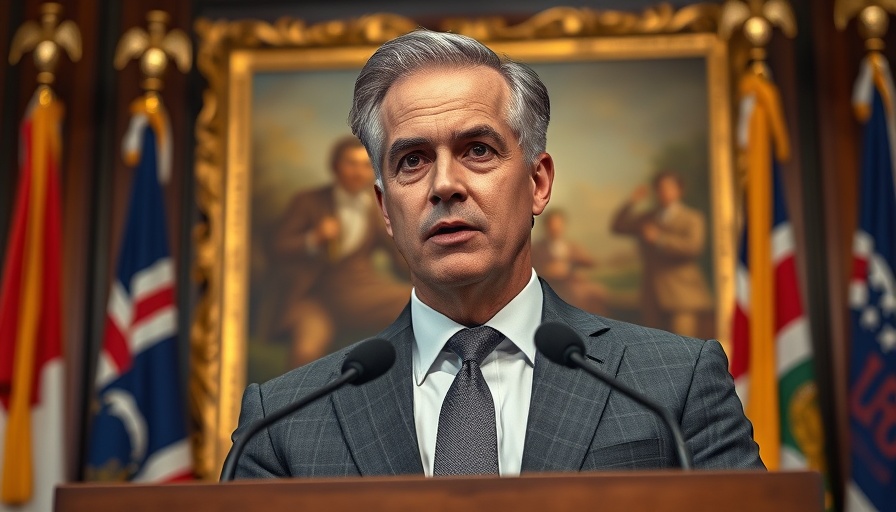
President Biden's Health Crisis: A Deep Dive into the Diagnosis
In an alarming development, President Joe Biden has been diagnosed with aggressive prostate cancer that has metastasized to his bones. This news, announced by his office, has raised significant concerns about the well-being of the 82-year-old leader, especially given the broader implications for his presidency amidst ongoing health evaluations. The diagnosis followed a series of troubling urinary problems, which prompted his visit to a Philadelphia hospital for a biopsy. The results confirmed the presence of cancer, characterized by its aggressive nature and significant spread—concerns that heighten the stakes of treatment discussions between Biden's family and medical professionals.
In the video 'Joe Biden diagnosed with 'aggressive' prostate cancer, his office says', the discussion dives into the significant health challenges facing the president, sparking deeper analysis on the implications for his leadership.
The Implications of Advanced Prostate Cancer
Prostate cancer is the second largest cancer-related cause of death among men in the U.S., just following lung cancer. Its commonality in older age demographics makes this diagnosis not entirely unexpected, as many men will contend with prostate issues as they age. However, the news of metastasis to the bone is grave. Typically, once cancer cells break away from their primary site and spread to distant locations in the body, it signifies advanced-stage disease, which generally involves more complex treatment options and a poorer prognosis.
Health Concerns Beyond Cancer
This incident comes nearly a year after President Biden withdrew from the presidential race due to growing concerns about his age and health. Reports of cognitive decline, evidenced by moments of forgetfulness during public speaking engagements, have followed him for some time. In political and public life, perceptions of health can deeply influence voter confidence and political support. As the president navigates this health crisis, there are pertinent questions about how this will affect both domestic policies and international relations.
The Emotional and Human Side of the Diagnosis
Biden’s health situation resonates beyond the political sphere, touching upon the human aspects of life with cancer. Many individuals and families face similar battles, navigating the challenges posed by serious illness. It brings to light the importance of support systems, healthcare access, and emotional wellness in managing such conditions. Understanding this perspective is crucial, particularly for the UK audience, who may find parallels with their own experiences of managing health issues and discussing the budget implications of healthcare.
Looking Ahead: What This Means for Biden’s Presidency
Given the seriousness of this diagnosis, it is critical to ponder the implications for Biden's presidency and the Democratic Party moving forward. Discussions surrounding Biden’s treatment will inevitably lead to speculation about his ability to fulfill presidential duties and his place in the upcoming election cycle. In an age where health and performance are closely scrutinized, this turning point could shape the Democratic Party's strategies as they prepare for future elections.
Conversations About Health: A Shared Responsibility
As this news unfolds, it’s crucial for citizens—especially those in the UK—to engage in broader conversations about cancer awareness, health screening, and the value placed on public figures' health. Encourage open dialogue regarding prostate health, urging regular check-ups, particularly for men approaching middle age. This not only raises awareness but also promotes preventive health measures within communities.
In an era marked by uncertainty, President Biden’s health crisis serves as a timely reminder of our shared humanity and the unpredictability of life. As his diagnosis prompts questions about governance and leadership, it equally fosters a community discourse on health, resilience, and support for one another in times of need.
If you or someone you know is dealing with health challenges, it’s essential to seek support—whether that’s through healthcare providers, support groups, or online resources. Together, we can navigate the complexities of health, share experiences, and foster a culture of care and understanding.
 Add Row
Add Row  Add
Add 




Write A Comment